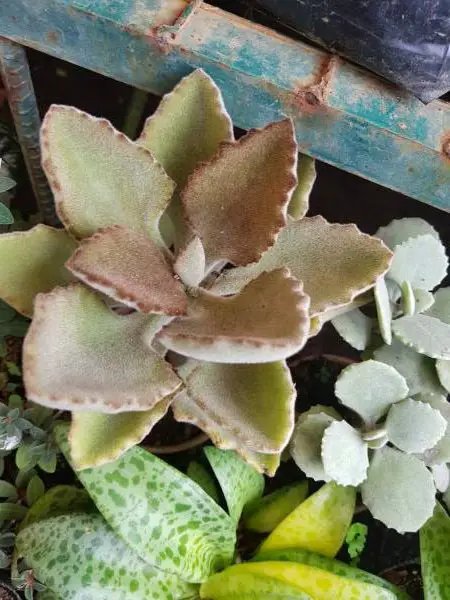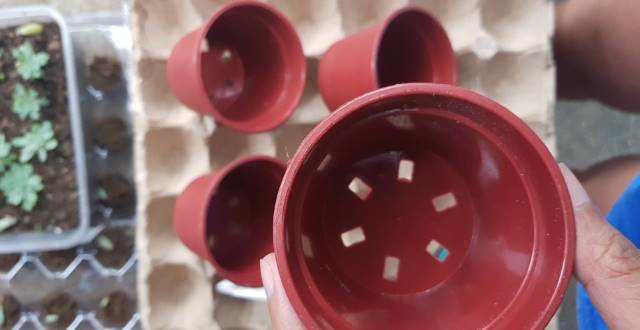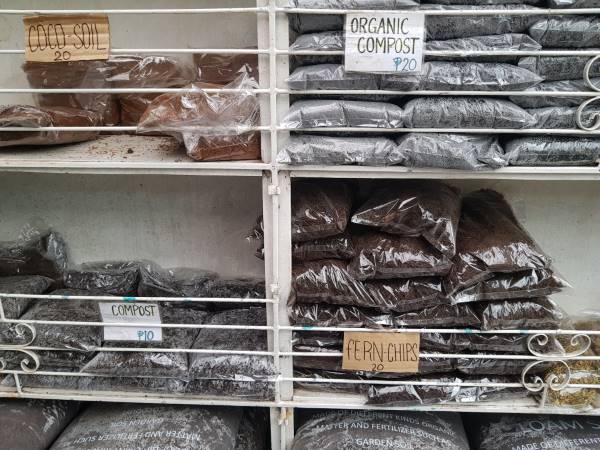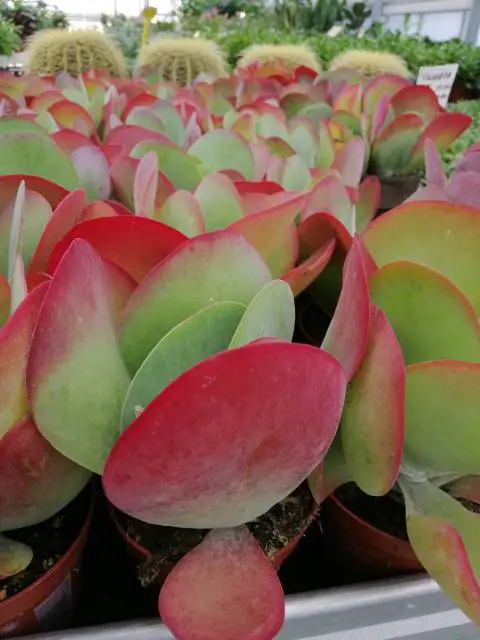Kalanchoe beharensis is an evergreen perennial succulent. The name of the species is given due to the specific epithet concerning the town “Behara” in Madagascar where this succulent grows in wild. It is a tree-like shrub belonging to the family Crassulaceae. It is given several common names due to the shapes and sizes of the leaves such as Felt Bush, Elephant’s Ear kalanchoe, Velvet Elephant Ear, Eared Elephant, Velvet Leaf, Maltese Cross, Napoleon’s Hat, and Teddy Bear. Kalanchoe beharensis has got the Award of Garden Merit by the Royal Horticultural Society.
While grown indoors or outdoors Kalanchoe beharensis is very easy to care for and thrives well with minimal maintenance and care. Kalanchoe beharensis is noteworthy for its eccentric appearance. They are excellent for beds, borders, Mediterranean gardens, and succulent gardens. They are just perfect for containers where they can create a wonderful floral arrangement.
Origin and distribution
Kalanchoe beharensis is native to the Behara region of South Madagascar. It grows wild in South Madagascar. Kalanchoe beharensis prefers to grow in several types of soils in xerophyte conditions (conditions from minimal no water at all).
How does Kalanchoe Beharensis look like?
Kalanchoe beharensis is a large shrub with a unique appearance. It grows to a height of 3 to 5 inches in cultivation. But it can reach up to a height of 12 to 20 inches under ideal growth conditions. It has a woody trunk, stem, and branches. Leaves are large, arrowhead or triangular shaped 5 to 14 inches long and 3 to 4 inches wide.
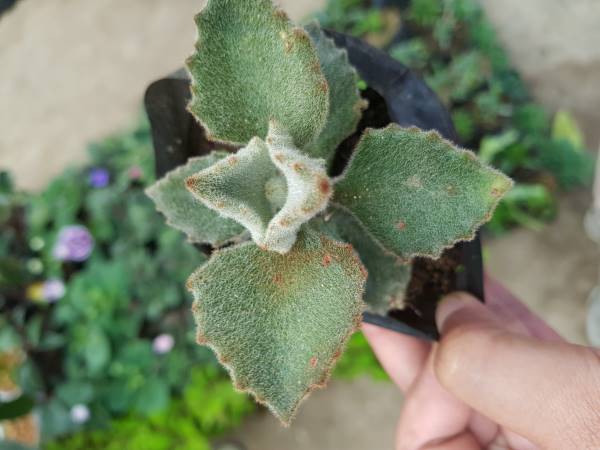
The olive-green leaves are covered with whitish felt-like hairs that’s why given the name Felt Bush. The hairs give the leaves a velvety texture. The mature leaves are concave and rusty brown. It produces small greenish-yellow urn-shaped flowers.
When the flowers bloom?
The blooming period for flowers is in the spring and summer seasons. Mature plants produce large clusters of flowers.
Growing the Felt Bush outside of the native area may impact its flower production. You may not see the flowers at all when grown outside.
How to grow and care for Kalanchoe beharensis?
Are you growing Felt Bush plants and want to know how to care for your Felt Bush plants?
We are glad here to help you in growing healthy Felt Bush plants.
Keep reading through the end to learn the basic care tips for Felt Bush plants.
Light requirements
Light is the most important requirement for growing healthy Felt Bush plants. If you are providing your succulents with necessary light levels they will grow best.
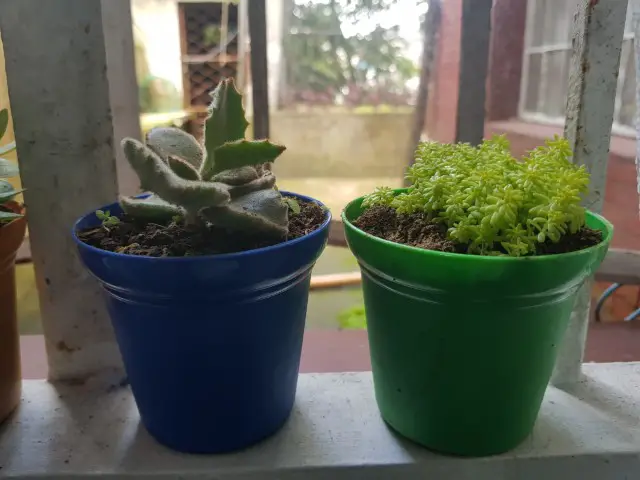
Kalanchoe beharensis likes to grow in full sun to partial shade. During the summer season give your succulents plenty of exposure to direct or partial sunlight. Keep your indoor plants near a south-facing window in winter to make sure they get plenty of sunlight. If you don’t give the required light levels to your plants their growth will be drastically affected.
But make sure don’t leave your plants under intense direct sun for the whole day. The intense southern light can cause tip burning.
Temperature requirements
As the plant is native to the Behara region of Madagascar, it grows well in warm regions. This succulent is not winter hardy, if the temperature goes too cold it will die.
When the temperature goes below 55 ◦F (12.7 ◦F), the plant will start showing the symptoms of distress. The temperature below 41 °F (5 ◦C) can be very problematic. Though Kalanchoe beharensis can not tolerate frost, make sure you move your plants indoors when the temperature drops to a very low or below freezing as it can kill the plants.
These succulents can’t tolerate very high temperatures as well and it can cause sunburn or injuries to the plants. Don’t keep your container plants outdoors under direct sunlight when the temperature is too high. Instead, keep your plants at a cool shady place.
If you are growing your Felt Bush plants in the garden soil at areas where summer temperature goes very high make sure you chose a shady place.
The plant is recommended to be grown in USDA hardiness zones 11 to 12.
USDA zones to grow Kalanchoe beharensis
- USDA Zone 11a: (40-45 °F) 4.4 to 7.2 °C
- USDA Zone 11b: (45-50 °F) 7.2 to 10 °C
- USDA Zone 12a: (50-55 °F) 10 to 12.8 °C
- USDA Zone 12b: (55-60 °F) 12.8 to 15.6 °C
Humidity needs
The plants can take any level of humidity. Usually, the humidity at room temperature is just fine for their growth.
Water requirements
Like most of the other succulents, Kalanchoe beharensis is drought tolerant and requires watering less often. In the summer you may need to water more frequently because the soil dries out too fast, while in winter frequent watering is not required. The plants can go a month without watering in winter.
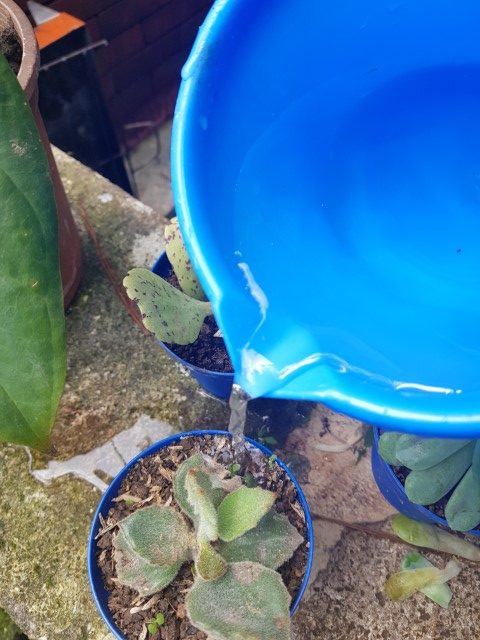
Water enough to make the soil slightly moist. Always allow the soil to dry out between watering. Don’t let the water standing in the pots, it will cause root rot and decay.
Excess water can also increase the chances of fungal growth on the plants. Watch the fleshy leaves carefully for any signs of water distress.
If you experience any signs of distress cut short the water supply.
Though they are drought-tolerant, make sure you don’t leave them thirsty for water for longer than usual.
Soil or growth medium
The selection of the right potting soil is necessary to ensure the healthy growth of the plants. Kalanchoe beharensis likes to grow in sandy loam and well-drained soil. An ordinary succulent soil mix is just fine for growing Felt Bush plants. You can purchase prepared standard succulent mix from the market.
If you want to prepare potting mix at home, mix equal parts of loam, sand, and gravel. The sand and gravel will help to improve the drainage capacity of the soil.
Don’t worry about the soil pH levels. Any pH of soil works fine for the growth of Felt Bush plants.
Fertilizations
Felt Bush plants don’t need fertilizers. It is not recommended to fertilize your plants when you are giving them enough sunlight and watering.
If you want to give your plants some extra nutrients, you can give them liquid fertilizer during the spring and summer seasons.
The administration of a balanced liquid fertilizer during the active growth season or blooming period is very useful to encourage more blooms and healthy growth. Apply fertilizer 3 to 4 times during the active growing season.
Avoid giving fertilizers to your plants during the winter season when the plants do not need nutrients.
Propagating Kalanchoe beharensis
Do you want some new Felt Bush Plants for your indoor or outdoor gardens?
You can propagate your existing Succulent at home and add them to your succulent collection with just a little effort. They can be propagated by using stem and leaf cuttings.
Select healthy damage-free succulent leaves or stems for taking cuttings. Using a clean scissor take several cuttings for propagation. Set aside the cuttings at a dry and warm place to develop callous for a couple of days.
Don’t let the cuttings dry for a long time, the cuttings will lose all the moisture and will no longer be appropriate for propagation.
Take a standard succulent growth medium and fill it in the containers. Place the cuttings on the growth medium and gently firm the soil around the cuttings.
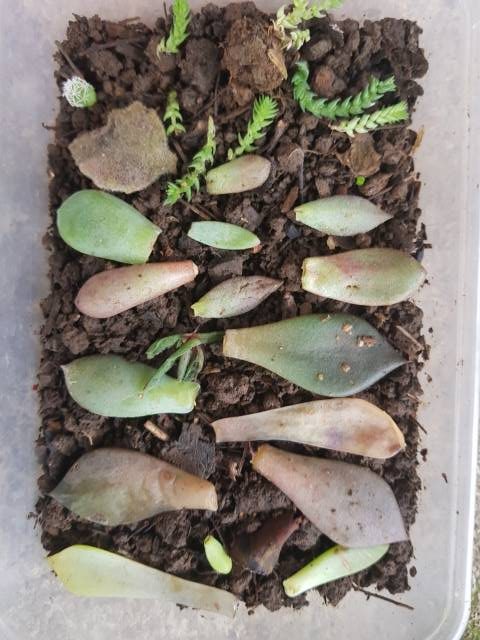
At the beginning sprinkle water on the cuttings regularly several times a day to keep the cuttings moist. Don’t let the soil become too damp it will cause rotting of the cuttings. Avoid exposure to intense bright sunlight.
After 3 to 4 weeks when the plants establish in the growth medium, care for them as you care for mature and fully grown Felt Bush plants.
Repotting or transplantation
When you buy a new Felt Bush plant transfer it to new pots as soon as possible. The succulents that you buy from the market usually come in very low-quality black containers that have poor drainage. Therefore, it is recommended to transfer your plants in better containers and fresh growth medium.
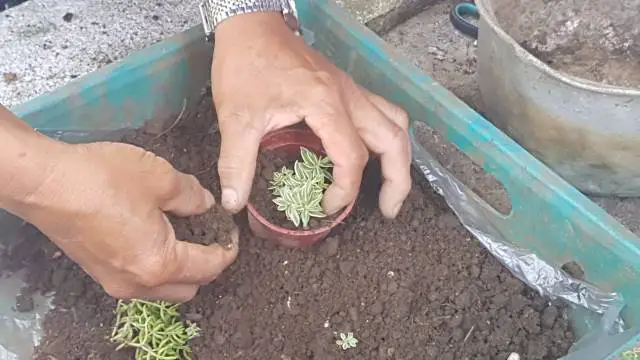
It is generally recommended to repot your Felt Bush plants every 2 years. You should also transfer your plants to new containers when the plants become too large for the containers and start overgrowing them. In such a situation your priority will be to shift them to bigger containers.
Preferably use terracotta or clay pots to transfer your succulents. Gently, remove the plant by digging the soil. Remove the soil and debris from the roots by gently shaking them.
Transfer the plants in the new pots containing fresh growth medium. Give more care and attention to your plants until they establish in the new soil.
Pruning or Deadheading
Kalanchoe beharensis is a slow-growing succulent and generally, it doesn’t require pruning.
However, pruning to remove spent blooms, dead or decaying leaves and stems is recommended to improve succulent growth.
The removal of spent blooms will ensure more blooming in the upcoming season.
Read More about When to prune your Kalanchoe Here:
http://kalanchoe-succulent.com/pruning-kalanchoe-plants-how-and-when-to-prune/
Pruning is a simple task to do. Just take clean scissors and trim the unwanted parts of the plants as desired. Make sure you cut only the unwanted plant part.
It is advised you should do pruning only when it is required, excessive pruning is strictly not recommended.
Is Kalanchoe beharensis poisonus?
Kalanchoe beharensis is completely nontoxic to humans. But it can be toxic to pet cats, and livestock. According to the National Animal Poison Information network, it is not poisonous to dogs if the plant is not treated with any chemicals.
Your pet cats may experience serious conditions after ingesting a Felt bush plant. The cardiac glycosides in this plant are toxic to animals and can lead to serious symptoms such as a change in heart rate, rhythm, excessive salivation, and stomach upset.
The toxicity will depend upon how much part of the plant your animal has ingested. Keep the plants out of the reach of your animals.
In case your pet accidentally ingests any part of the plant, consult a Veterinarian as soon as possible.
Insect pests and diseases
Kalanchoe beharensis is tolerant to insect pests or diseases. Normally, no serious insect pest infestations or diseases appear on this plant.
They may show some susceptibility to mealybugs, scales, aphids, and mites. These insects like to feed on the leaves of Felt Bush plants. They can be a problem if they go unnoticed. It is better to check your plants regularly to control the problem as soon as it appears.
How to get rid of insect pest attacking Felt Brush plants?
It is recommended to rub the plant parts with 70% isopropyl alcohol it will throw these creepy critters away.
Neem oil spray and an insecticidal spray can also be used to fix this problem. Use only recommended nontoxic insecticidal sprays.
Potential disease problems like root rot, leaf spots, and powdery mildew may also appear on this plant.
From where to buy Kalanchoe beharensis?
Do you want to know where you can buy Kalanchoe beharensis?
You can buy Kalanchoe beharensis from the local nurseries or sale markets available with several local names such as Felt Bush Plant and Elephant’s Ear Plant.
For online shoppers here is good news you can also purchase this beautiful plant from Amazon, Mountain Crest Gardens, and Etsy.
Just make sure you shift the plants to new and better containers after buying them from the store or online.
Bottom Line
In conclusion, Kalanchoe beharensis with its grotesque appearance can be a great addition to your home gardens.
If you are fond of Kalanchoe plant varieties, you must add a few Felt Bush plants in your collection. You can buy them easily from local stores or online websites.
They are very easy to care for and can grow well with minimal maintenance. Just be cautious with the light and watering levels your plants will grow healthily and happily.
I hope this Kalanchoe beharensis care guide will help you to grow healthy Felt Bush plants at home and you will be able to solve all your planting issues.
Happy Planting!

